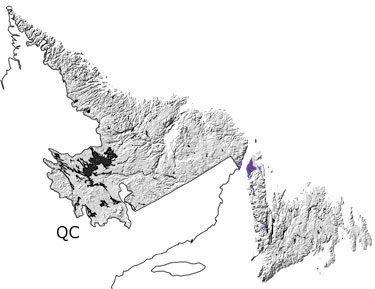

The Cambrian in Newfoundland and Labrador, Canada |
|||||||||||||||||||||||||||||||||||||||||||||||||||||||||||
|
|||||||||||||||||||||||||||||||||||||||||||||||||||||||||||
Paleontology and geologyDuring the Cambrian, Labrador was on the southern edge of the Laurentian continent near the equator. Most of the peninsula was above sea level and exposed to erosion. Sediments from this area were deposited on the shallow continental shelf nearby. Farther offshore, at the edge of the shelf and down the slope was modern-day western Newfoundland. Archeocyathid reefs developed in very shallow areas, and trilobites, brachiopods, graptolites, and other marine animals flourished in the warm, shallow waters. This snapshot of Cambrian life is preserved in the sandstones, shales, and limestones from southern Labrador and western Newfoundland. Conglomerates also record frequent debris flows that occurred on the continental slope. They contain abundant fossils of animals that got caught up in the underwater avalanches. Eastern Newfoundland was part of another, smaller continent called Avalonia, named after the Avalon Peninsula. It was covered by a relatively cooler, deeper sea at temperate latitudes. Different kinds of trilobites, brachiopods, and other marine invertebrates lived in these waters. In fact, fossils from eastern Newfoundland are more like those of Europe and Scandinavia than the other side of the island. |
|||||||||||||||||||||||||||||||||||||||||||||||||||||||||||
|
|
|||||||||||||||||||||||||||||||||||||||||||||||||||||||||||
|
site tour |
about the site |
site map |
site credits |
page credits |
help |
FAQs |
contact |
||


